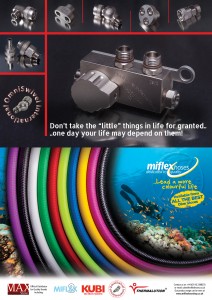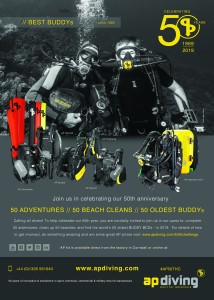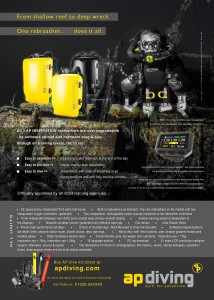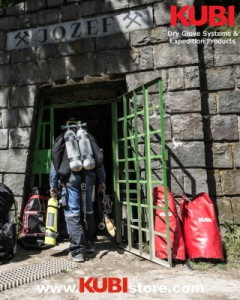DICTIONARY OF EGYPTIAN SHIPWRECKS P
DICTIONARY OF EGYPTIAN SHIPWRECKS- P
FURTHER DETAILS CAN BE DOWNLOADED FROM
www.KUBIstore.com & www.Miflexhoseshop.co.uk
S.S. PASS OF BALMAHA
The Pass of Balmaha was a steam tanker of 758 tons built at Blythswood Shipbuilding Co. Ltd., Scotstoun Yard No. 33, Glasgow for the Bulk Oil Steamship Co. Ltd., (Cook), London. Launched 24 August 1933, and completed the following September, she was single screwed vessel of 192.2 feet in length and 40.4 feet in beam.
On 16 October 1941 the Balmaha departed Alexandria with the Greek steamer Samos and the anti-submarine whaler KOS 19 enroute to Mersa Matruh to rendevouz with the gunboat Gnat and lighters A.13, A.17, and A.18 before proceeding to Tobruk.
At 0055 on 17 October 1941, the U-97 (Udo Heilmann) spotted a small convoy, consisting of the Samos and Balmaha under escort by the British Armed Trawler HMS Cocker (or KOS 19?) about 50 miles west of Alexandria. A first spread of torpedoes were fired at 0217 and missed the ships. A second spread of torpedoes were fired at 0325 and hit and sank the Samos. At 0400 a third spread of torpedoes was fired in which one torpedo hit the Balmaha and disappeared in a flaming inferno, a cloud of smoke and flames was seen rising about 300 meters into the air. The Balmaha sank at position 31.14N/28.50E in over 1000 meters of water taking the Master, Stanley Kirby Hardy, 15 crew, and 2 gunners with it (all hands lost).
M.V. PATIA
Built in 1941 as the Kronprins Frederik by Helsingors Jernsk, She was 3947 tons,114 mtrs long,15 mtr beam. Her machinery consisted of 2 x 10 cylinder B&W diesels delivering 8400bhp.Due to World War 22 she was moved to Sydhamn, Copenhagen and her valuable fittings stripped for safe keeping. She did not commence her operations with DFDS until 1946. She was employed as a North Sea ferry between Esbjerg and Harwich until 1964. In April 1953 she was ravaged by fire and capsized at Harwich quay, and with one third of her superstructure gutted, she was raised in August of that year and taken to Elsinmore and underwent 8 months of repairs. She completed no less than 1430 crossings. From 1964 she worked the Newcastle Esbjerg route until 1976, undergoing a major refit in 1966 which included bow thrusters and stabilising tanks. Then she was sold to the Arab Navigators Co. of Egypt and became the Patra.
In December of that year, while engaged in the Jeddah to Suez run, the Patra left Jeddah on the 23rd with 353 passengers and 88 crew on board. Some time after departure fire broke out in the engine room and continued to rage through the superstructure for 13 hours.12 vessels raced to the scene including the Russian motor tanker Lenino which took 166 passengers and 40 crewmen onboard to Suez. Another Russian vessel picked up a further 24 survivors. Of the 102 lost 98 were pilgrims and 4 crew. The ship sank about midday on the 23rd .The Master claimed the passengers ignored his orders but many witnesses claimed the fire fighting equipment was unfit for use and there was not enough life jackets.
S.M.S..PERESVYET
The Peresvyet (also spelled “Peresviet, Peresvet”) was the first of three 13,500 GRT pre-dreadnaught ships of the same class name, Peresvyet, after the Russian Monk Alexander Peresvyet who was the champion at the Battle of Kulikovo, Built for the Imperial Russian Navy at the Baltic Shipbuilding yard, St. Petersburg, Russia construction was inspired by the British HMS Centurion. She was designed for good range and seakeeping, higher speeds, but with weaker armour and armament than first class battleships. Her construction style also shows a French influence by the tumblehome of the ship’s hull. Russian ship construction was typically slow at the time, which resulted in her being nearly outclassed by the time she entered service.
Her keel was laid 21 November 1895, launched 19 May 1898, and completed in July 1901. She was 133 meters in length, 21.8 meters in beam, and 8-meters in draught with 32 Bellville type coal fired boilers (generating 15,000 Bhp), 2 vertical triple-expansion engines, and 2 shafts which provided a maximum speed of 18-18.5 knots and a range of 3500 NM.
Armament consisted of:
4x 10-inch guns (254mm in twin mount formation)
11x 6-inch 152mm guns (single-mount installations)
20x 75mm guns (single-mount installations)
5x 15-inch torpedo tubes (381mm)
Armour was 9-inch Harveyised nickel steel belt which ran nearly the entire length of the ship.
The Peresvyet was based at Port Arthur, Tasmania as part of the Russian Pacific Fleet. She participated in the Yellow Sea Battle on 10 August 1904 where she was seriously damaged by the Japanese while pierside. She was subsequently trapped in Port Arthur and reportedly was hit by 20 or more 11-inch Howitzer rounds. The ship was scuttled by the Russian Navy on 07 December 1904.
The “Peresviet” scuttled at Port Arthur
The Japanese Navy eventually raised and repaired the Peresvyet, renaming her the Sagami where she served in the Japanese Navy until Russia, in great need of warships for her White Sea ports against possible German raids in WWI, purchased her from the Japanese Navy in 1916 and returned to her original name, Peresvyet.
Shortly after being purchased and renamed Peresvyet, she promptly ran aground off of Vladivostok on 26 May 1916, where she remained aground until being refloated the following July.
Later during that same year, she was reassigned to the Russian Arctic Fleet to become the fleet’s flagship. However, while enroute from Vladivostock to her new station in the company of the Russian ships Ashold and Variag, she had just passed through the Suez Canal on 04 January 1917 when she struck a mine laid by German Type UC-II Mine Laying Boat UC-73 (Kurt Schapler) approximately 10 miles off of Port Said. The following is an excerpt from the son of the Variag’s commanding officer:
“From Ceylon, the ships proceeded through the Suez Canal, and warning had been given that the waters outside the Canal on the Mediterranean side had been heavily mined by enemy submarines, and strict orders were given to sail through lanes, which had supposedly been cleared of mines.
Father disobeyed orders, feeling that at the exit of those lanes enemy submarines may be lurking, and he was right, the Variag, taking another course, and coming out safely, whereas the Persviet, on coming out of the lane, struck a mine, or was torpedoed, and sunk, the Ashold came out alright”
Over 700 sailors of the ship’s sailors were rescued by British ships in the area, where they were taken to Port Said and treated at the 31st General Hospital. The number of lives lost varies between 47 and 60.
M V POLIAGOS
A Cypriot motor vessel of 3371 tons,107 mtrs x 14.3 mtrs, built 1947 by De Merwede V. Vleit &Co, Hardinxveld, and owned at the time of loss by Panagia Odigitria Shuipping Co.
On the 17/12/1980, while on a passage from Piraeus to Gizan, with 5000 tons of cement, struck a reef near Shadwan Island, while taking evasive action to avoid a collision with another vessel. Her 14 crew members being rescued
S.S.POLARIA
A British cargo ship, built in 1893 by Workman, Clarke & Co, for Houlder Middleton & co, she was 3546 tons, 360 ft long, with a cargo of coal and wagons bound for Alexandria from Cardiff as she approached her destination she was wrecked on Jan 5th, 1918.
M.V PORT FOUAD
Initially a contender for the fridge wreck, however as the specification conflicts with the wreckage this wreck remains un- located-so far! The Egyptian motor ship, 779 ton, was lost on the Sinai coast 25th April 1954.Built as the LILIAS (ex PO,) by Edward & Co Milwall, she was a steel twin screw steamer, 190 ft x 30 with engines by Vauxall hydraulics. Owner Mustafa Mallam
PRIDE OF AL SALAM 95
In January 2009 I went on another “road trip”, this time to Suez, where for a couple of days I lived on a faluka- a small Egyptian ( and very smelly) fishing boat. With he help of the fishermen I located several interesting shipwrecks, including the PRIDE OF AL SALAM, formally the FREE ENTERPRISE V
She lies on her side in 35mtrs of water. Her port lifeboats have not yet made it to the surface-but they are trying!
An eerie site-a row of lifeboats, still attached float vertically above the wreck
Undived until now-both wing compasses are still in place
Free Enterprise VI was built in 1972 by I.C.H. Holland, Werf Gusto Yard, Schiedam, Holland for the European Ferries Group. She was used on Townsend-Thoresen services out of Dover to Calais, Zeebrugge and Boulogne. Free Enterprise VI was the third of five sisterships, which were initially named Free Enterprise IV-VIII. In 1985 Free Enterprise VI was rebuilt by Schichau-Werft AG, Bremerhaven with an additional freight deck. The resulting design was one of the ugliest in history. In 1987, registered owners of Free Enterprise VI became P&O European Ferries, and she was renamed Pride of Sandwich the following year. She worked the Dover-Zeebrugge route until 1992, when she was transferred to the Cairnryan-Larne route and renamed Pride of Ailsa. In 1996 she was sold to Egyptian owners and renamed Pride of Al Salam 95 for service between Suez-Jeddah.
Pride of Al Salam 95 was lost around 19:30 local time on the evening of the 17/10/2005 after colliding with a container ship near the Egyptian harbour of Port Tawfiq. The Pride of Al Salam 95, owned by El Salam Maritime Transport of Egypt, had left the Saudi Arabian port of Jeddah on the 16/10/2005 with around 1466 people onboard, mainly Egyptians returning home after performing the Muslim pilgrimage to Mecca. The ferry was at sea awaiting safe passage to enter the port of Suez when she was rammed by the Cypriot registered cargo ship Jebal Ali, which had just cleared the southern part of the Suez Canal after passing through the canal from the Mediterranean to the Red Sea. The cargo ship ran into the side of the ferry, tearing a 5m diameter hole in her side in the vicinity of the engine room. After the collision, both ships locked together so the ferry remained afloat long enough for the passengers to board the cargo ship and from there be transferred ashore by a flotilla of rescue vessels. Once the two vessels broke apart when the cargo ship went astern after evacuating all the ferry passengers and crew, the Pride of Al Salam 95 sank in around 3½ minutes.
Reports suggest that up to 11 people may have died in the incident, killed either by the impact of the collision or in the stampede as passengers attempted to get to safety as quickly as possible. At least a further 98 of the ferry’s passengers were being reported as injured. Damage to the Jebal Ali was reported to be slight and their are no casualties among her crew. Although sinking in the approaches to the southern entrance to the Suez Canal, the wreck of the Pride of Al Salam 95 has not blocked the canal and is now marked by buoys.
S.S.PRINCESS MARGUERITE
Built in 1925 by John Brown &Co, for the Canadian Pacific Railway co., the 5908 ton, 350ft. passenger liner Princess Marguerite was fitted with turbine engines delivering 2462 knots, giving her a speed of21knots
On August 17th, during the North African Campaign, Princess Marguerite was en route from Port Said, Egypt to Famagusta on the the Mediterranean island of Cyprus with around 1,000 troops on board. Despite a vigilant escort of three destroyers and the Armed Merchant Cruiser HMS Antwerp, the Marguerite was torpedoed by U-83. The fires which resulted were soon out of control and Princess Marguerite’s master, Captain Leicester, gave the order to “abandon ship”. Blazing fuel in the water made this dangerous, but the aptly-named British destroyer HMS Hero (later transferred to the Royal Canadian Navy and renamed HMCS Chaudiere), managed to rescue a very high percentage of those aboard the liner. Fifty-Five lives were lost.
S.S.PUNDIT
The Pundit was a steamship of 5,917 Grt. built a Chas. Connell & Co., Ltd., Liverpool (Scotstoun Yard No. 270) for the Asiatic Steam Navigation Co. Ltd., Liverpool. She was launched 01 October 1902 and completed in December of 1902. She was 438 feet in length, 51.3 feet in beam, and 25.7 feet in draught. The ship was a single-screw vessel with triple-expansion turbines providing a cruising speed of 12.5 knots. At some time during the life of the ship, she was requisitioned for war service in the British Royal Navy and was defensively armed
On 09 June 1918 the Pundit was torpedoed and sunk by German submarine UB-105 (Wilhelm Marschall) approximately 85 miles West-by-Northwest of Alexandria while on the Tyne-Alexandria route carrying a cargo of coal. The captain and 5 crew were lost with the ship.
DICTIONARY OF EGYPTIAN SHIPWRECKS- P
FURTHER DETAILS CAN BE DOWNLOADED FROM
www.KUBIstore.com & www.Miflexhoseshop.co.uk





